Dressing for cold weather can be a challenge, but with the proper winter layering, you can stay warm all season long. Dave and I have done our fair share of cold weather travel. We’ve faced -30 weather skijorring in Alberta and we’ve been winter camping in weather so cold, the temperature fell completely off the thermometer.
So when it comes to layering for cold weather, we know what we are talking about. We’ve been to both poles and everywhere in between and the most important part of our cold weather travels has been about dressing properly.
Table of Contents
How to Layer for Cold Weather – A Winter Layering Guide
Believe it or not, it is possible to stay warm and enjoy the outdoors during the winter if you follow a few rules. The first rule is that you have to layer your clothes. We’ve learned the hard way about how to layer properly. So we wanted to share our layering tips to dress for this latest cold weather from our years of trial and error. It’s easier than you think! Watch our video to see how to dress for winter layering
1. How to Choose a Base Layer
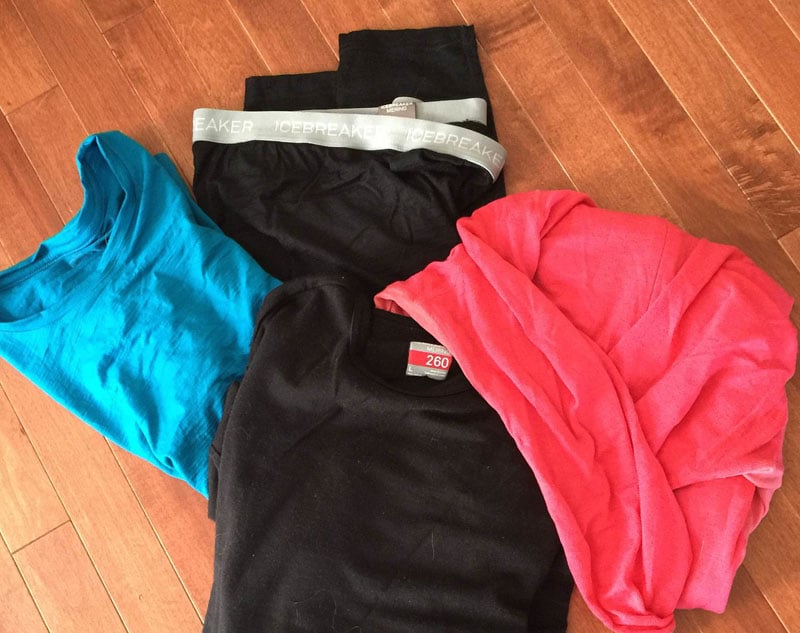
When it comes to learning how to layer for winter, the base layer is definitely the most important. Think of your cold weather base layer as a second skin. The key to a great base layer is to use a material that wicks the sweat away from your body. The more you sweat the colder you can get if it is not wicked away.
Best Base Layer Material for Cold Weather
For your base layer material, we recommend Merino Wool. It is lightweight, breathes, and doesn’t smell making it perfect for wicking away moisture.
You want to make sure that it fits snug and is comfortable. Try to avoid cotton, as it actually holds moisture and can leave you freezing. We prefer to go with natural fibers over synthetic ones like polyester. They both can accomplish the same thing but we find the Merino Wool works a bit better.
We use the Icebreaker brand of Merino Wool and have found it to be the best after trying quite a few different base layers. We have used our Icebreaker layers to train for dog sledding with Iditarod and Yukon Quest dog musher, Hank DeBruin, during our 100km trek into the Arctic watershed and when we went snowmobiling, ice skating, and snowshoeing.
Our Recommended Base Layer for Cold Weather
These Merino Wool base layers kept us warm and dry every time.
Chilly:
- Mid-weight Base Layer Merino Wool Bottoms Mens
- Mid-weight Base Layer Merino Wool Bottoms Women
- Mid-weight Base Layer Merino Wool Top Women
- Mid-weight Base Layer Merino Wool Top Men
Extremely Cold:
- Heavy-weight Base Layer Merino Wool Bottoms Mens
- Heavy-weight Base Layer Merino Wool Bottoms Women
- Heavy-weight Base Layer Merino Wool Top Women
- Heavy-weight Base Layer Merino Wool Top Men
2. How to Choose a Mid Layer
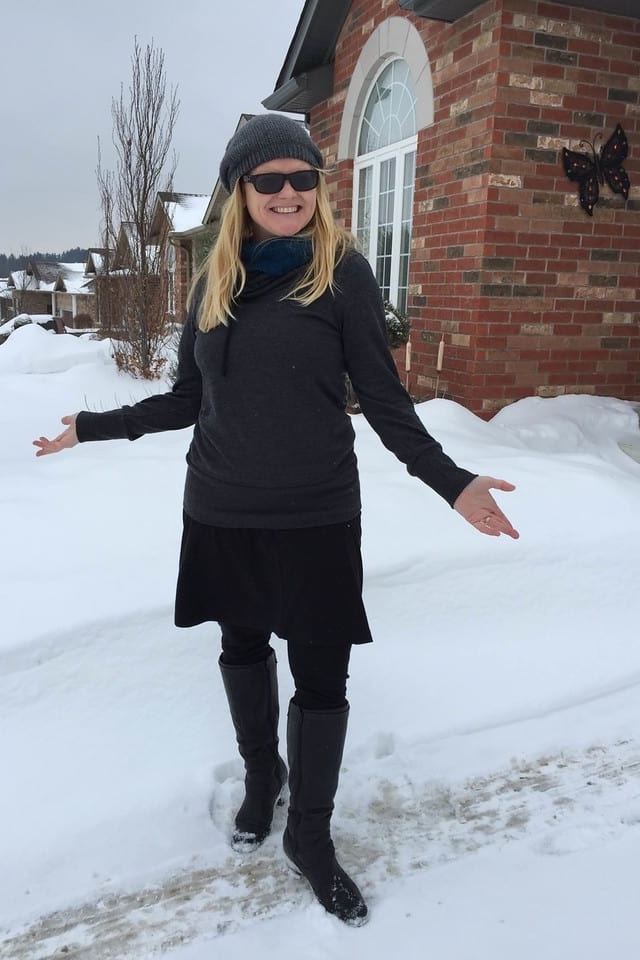
The mid-layer is all about retaining heat. Most people think that you need to wear a huge parka to stay warm. But the key is actually to layer for breathability.
Best Mid Layer Material for Cold Weather
For the more budget-conscious fleece is a good alternative. Although it doesn’t perform so well when it gets wet. Down and wool work best for keeping heat in so this is what we prefer. We alternate between these two mid-layers depending on the temperature and the activity we’re doing.
We find the down can cause overheating quickly if we are doing vigorous adventures, but if we’re sitting on a snowmobile or tubing down a track, it’s perfect. When we’re working up a sweat snowshoeing or cross-country skiing, we prefer wool.
For layering pants, we suggest wool or fleece. You can pack heavier weights for very cold days or lighter weights for days that hover around the freezing mark. I love how wool keeps you warm but is also lightweight. It’s perfect for a walk on a balmy winter day.
Our Recommended Mid Layer for Cold Weather
Merino Wool
Down
3. How to Choose an Outer Layer
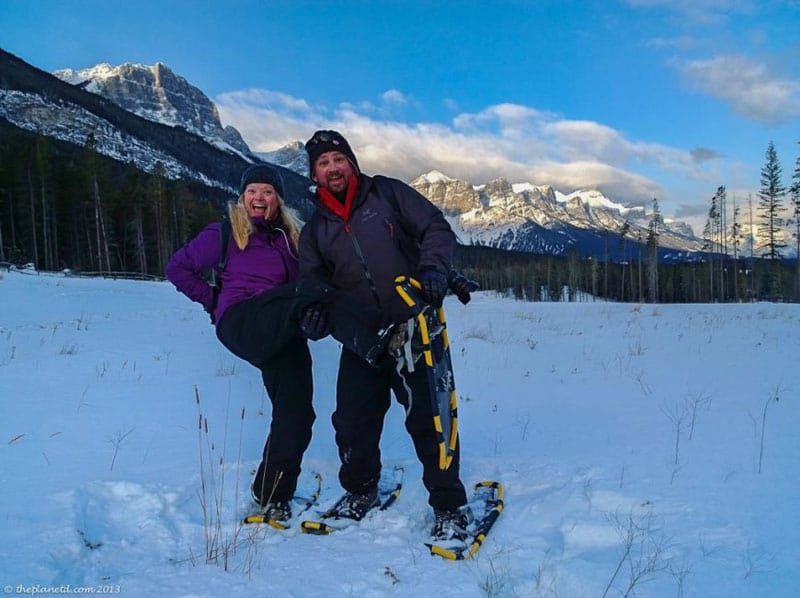
Having the right outer shell helps protect from the harsh elements like rain, wind, and snow. With the proper layers worn underneath, this top-layer jacket keeps the wind from robbing you of heat.
Best Outer Layer Material for Cold Weather
You will want to look for something that is waterproof and breathable. Nylon or Polyester is a good option. We use GoreTex and have for years. it is durable and is really waterproof yet it is breathable and wind resistant.
Remember that all of your layers should be breathable if this layering system is going to work. Don’t get fooled into thinking that bulkier is better.
Our Recommended Outer Layer for Cold Weather
- Waterproof Gore-Tex Shell Jacket – We’ve found that it worked for all outdoor activities. We wore this shell ice climbing, snowboarding snowshoeing and, skijoring.
- Gore-Tex pants -We currently use the Arcteryx Beta SL pants which are great. Durable, lightweight, and waterproof. Perfect for those windy days.
- Snow Pants – These are optional but if you want to skip a layer, you can wear these with your base layer.
Once again, make sure it has zippers and vents to let in air. Vents can easily cool you down without have to strip down right away.
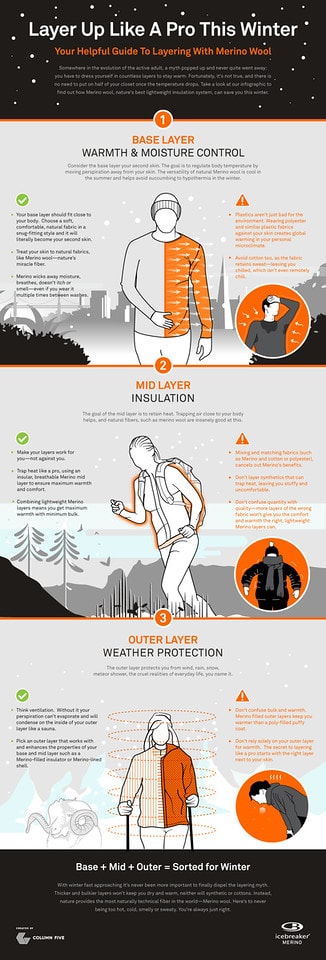
Parkas for Cold Weather

Even when layering, you sometimes need something warmer than just an outer shell. When doing outdoor activities, we strip down to our base layer, but when we are resting or once we finish, a cozy parka is a must. We made the switch from Canada Goose to Triple Fat Goose and love it.
Triple F.A.T. Goose, is much more affordable. Second, I think it is more stylish and you won’t look like a poser wearing Canada Goose like everyone else. I always hate being trendy. Triple F.A.T. Goose makes down jackets “For Arctic Temperatures” that has evolved into a direct-to-consumer brand, offering luxury outerwear with technical performance features.
4. Anticipate your body temperature
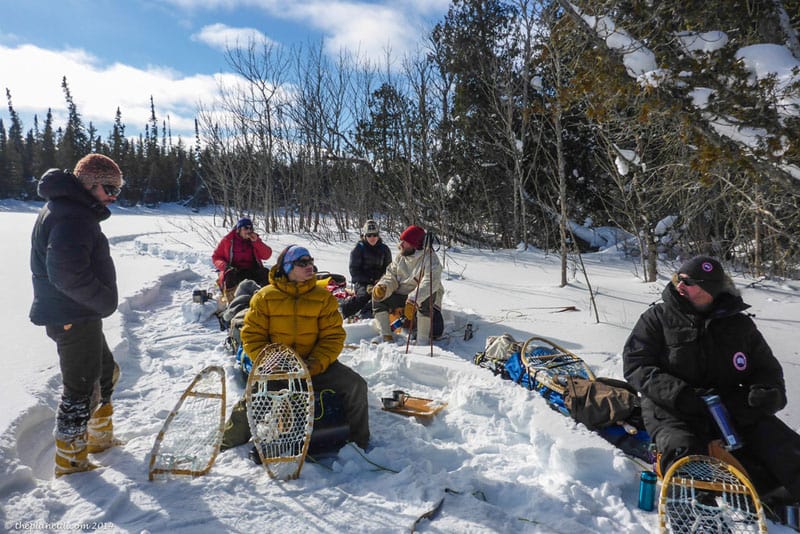
Having the right layering clothes is just the first half of staying warm in the winter. The second part has to do with actually knowing how to regulate your body temperature by adding and shedding layers as needed. The most important part of outdoor adventures is to never work up too much of a sweat.
The biggest mistake people make is waiting too long to shed their layers. A good rule of thumb is to start off with all 3 layers on, then as you START to feel a little too warm, shed a layer. As the activity increases and you are working harder, you should be taking off more layers.
Don’t be afraid to hike with just your base layers on. We have done this on several expeditions and it kept us warmer in the long run. Just remember that when you stop, to get those layers back on as soon as you can, or throw on a parka to trap in the heat so you don’t get a chill.
If you wait until you start shivering, it’s too late. You want to get those warm layers on before you start to feel cold. When we are on an expedition or multi-day winter trek, we always carry a parka for these instances. Being able to throw on a heavy parka during lunch stops and rests helps us keep our energy up.
5. Protect Your Head, Face, and Toes
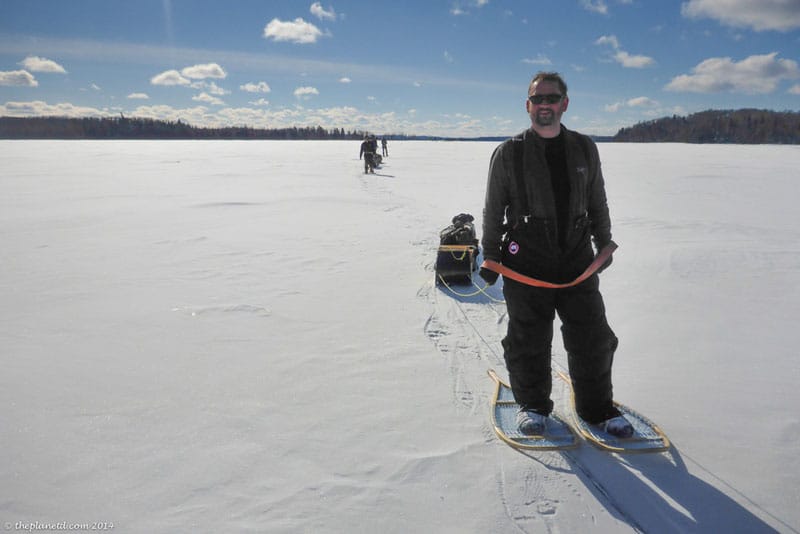
We were all guilty of it as kids. We never wore hats and we rarely wore gloves, but keeping those extremities covered will help keep you warm. It’s not a myth that all your heat escapes through your head, feet, and hands. And these parts of your body are often the first things to feel the cold.
Headwear for Cold Weather
This is where you lose the most heat if you don’t cover it. We have found the best way to do this is to have 2 different types of hats. One ultra warm to put on when resting at camp or lunch and a light hat to wear when doing an activity.
- We love Aviation or trapper hats with earflaps are our favorite for keeping us warm and a merino wool beanie is excellent for activities.
Keep your Face Warm
I used to always wear a dickie but the fleece always caused me to break out. I chose a Merino Wool Neck Gaitor from Minus33 and it feels soft on my chin but keeps my neck warm.
I tend to really feel the cold in my neck and need that extra layer to finish off my layering wardrobe.
2 Buffs – We always bring two sets of buffs. They can be great for keeping the next warm and to be used as a light hat or headband.
Footwear for Cold Weather
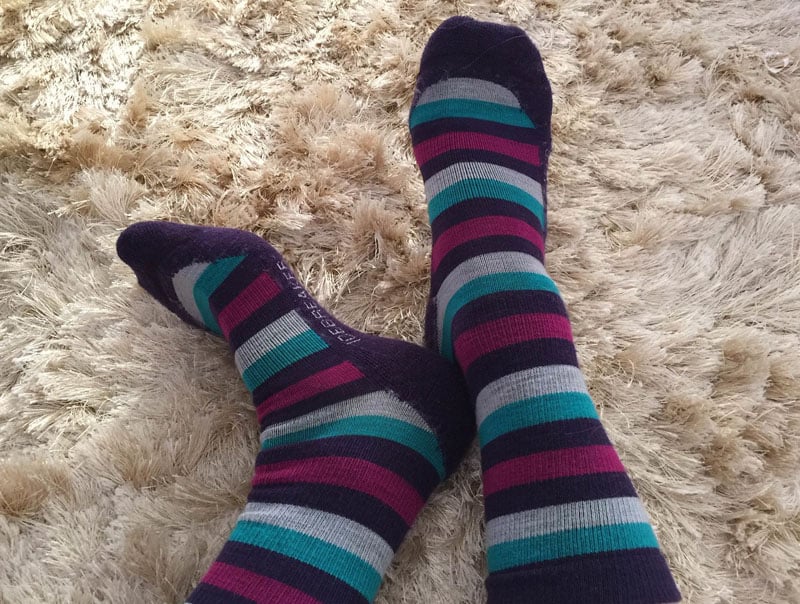
Keeping your feet warm can be the biggest challenge in winter, especially on those really cold days. That is why the best solution is to layer your socks.
- Layer 1: Liner socks – Liner socks are lightweight and small, but perfect for wicking away moisture. It’s important to keep feet dry to keep them warm.
- Layer 2: mid-layer socks – The mid-layer socks are thick warm wool socks that insulate our feet. Usually, this is enough and we don’t have to add any more, but when the temperatures get really cold, another outer layer is great.
- Heavy Socks – As you can see we like layering everything. If you are going to be in some extreme cold weather, the third pair of heavier wool socks will keep your feet toasty warm.
- Winter Hiking Boots – For trekking and other activities a good set of Gortex hiking boots will fit all your needs.
Make sure to buy a size that accounts for the extra layers of socks. Tight boots will freeze your toes. But you also don’t want floppy boots either. Wear the socks you intend to wear on your adventures when trying on your boots.
Packing Suggestions for winter travel or Expeditions
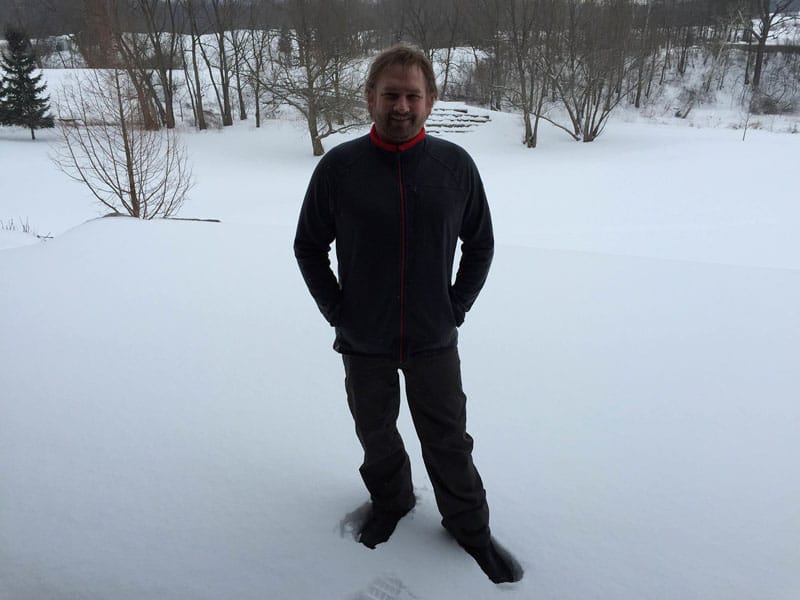
2 Pairs of Icebreaker leggings
Icebreaker may be more expensive than other brands, but you will have it for years. It wicks away moisture and it is odor resistant. With this high-quality wool, we can do 10 days to 2-week trips (with no shower) using only two sets of our merino wool base layers (wool usually makes me itchy, but not this stuff) and they worked like a charm. Icebreaker is made of Merino Wool from New Zealand and you can wear it day in day out without odor.
- We bought the 260 weight for extremely cold temperatures.
- Sprite Ultralight 175 is an excellent addition to our gear list for weather that is not so cold. It will wick away moisture if we are Ice Climbing or skiing, but keep us warm too.
We suggest having two so that you can change it up for fluctuating temperatures and if you happen to get very wet one day. Even though wool dries fast, it’s nice to hop into a fresh warm and dry pair.
2 Merino Wool Crew Shirts
Once again we bought the Icebreaker brand. It’s expensive, but it’s all we’ll need for the next decade and we’ll be able to use it on any mountain treks or winter trips to come. It’s important to have a base layer that wicks away moisture and we like having two pairs with us because we can change if anything is damp, if it needs to be cleaned or if we just want to change it up.
2 Merino Wool T-shirts
We’ve recently added merino wool T-Shirts to our packing list. These are perfect for any kind of weather and can act as a base layer in a pinch. I love their colour choices and they look so great I wear them all the time.
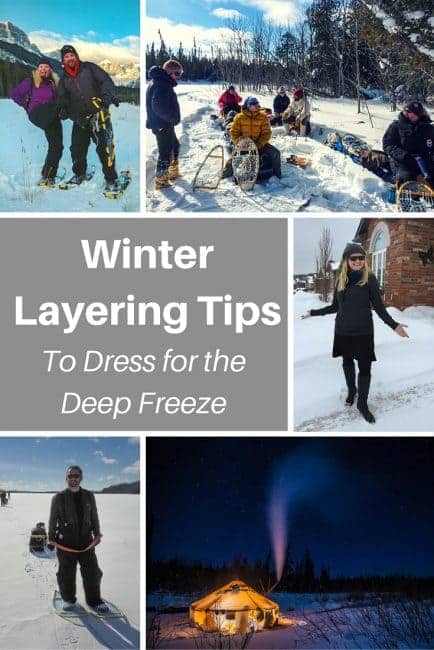
So as you can see, it’s important to layer when you are going outside to face the elements for an extended period of time. Make sure to think about everything from head to toe. If one spot on your body is cold, it can ruin your day. You may think, “I have a good jacket” but just because your chest and shoulders are warm, doesn’t mean everything else will stay warm.
You have to think about the whole package.
Check out our Video of How to Dress for Winter
Do you have any layer tips to stay warm in this winter deep freeze? We’d love to hear.
Read More about Winter Travel and Trekking
- Canada Winter Activities You Just Cannot Miss!
- Winterlude Itinerary – The Ultimate Guide to Ottawa
- 8 TIPS FOR SAFE AND COMFORTABLE WINTER TREKKING
- PACKING TIPS FOR WINTER TRAVEL
- A DAY IN THE LIFE – AN EXTREME WINTER EXPEDITION
- Packing for Everest Base Camp Trek
- 15 Top Ski Resorts in Canada For Winter Fun
- The Greatest Things to do in Winter in Ontario
- 21 Best Winter Vacations in the US
- The Best Winter Activities in Colorado
And Enjoy these other Packing Tips

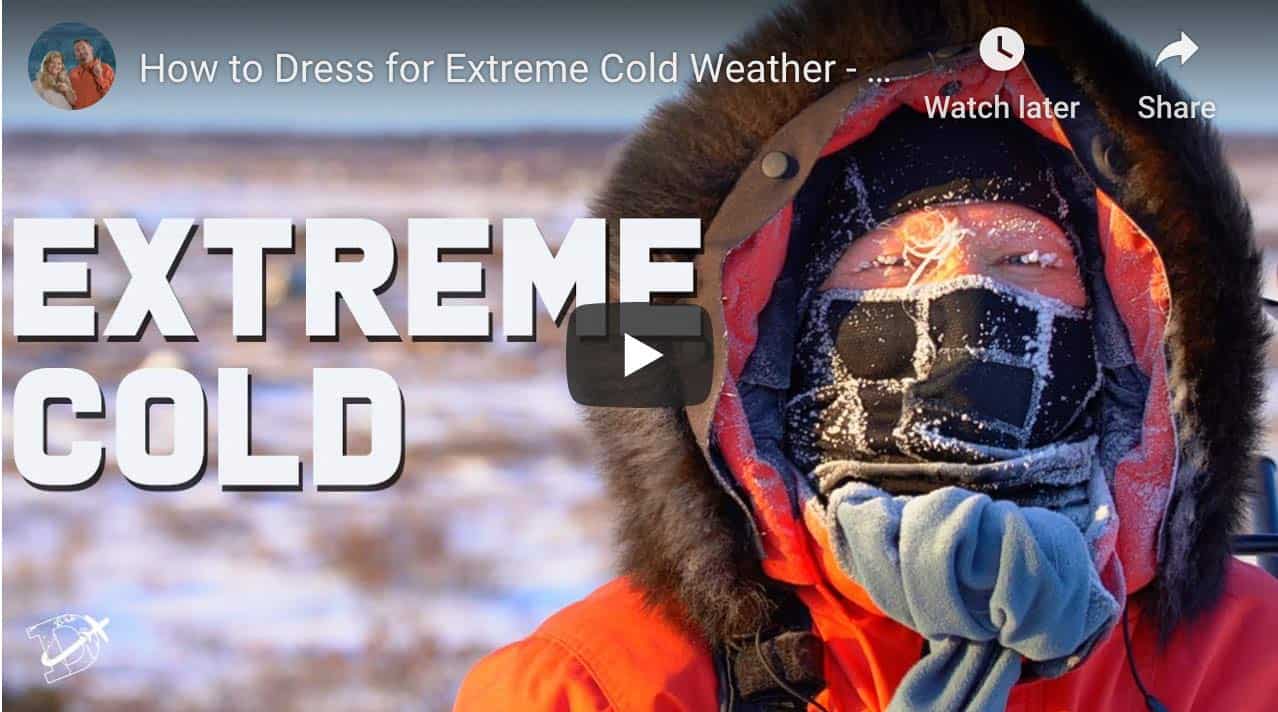
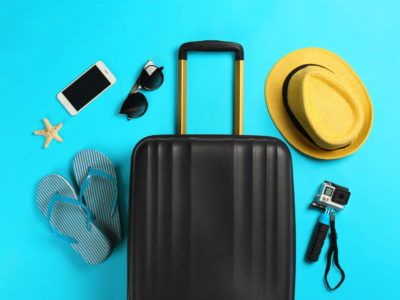
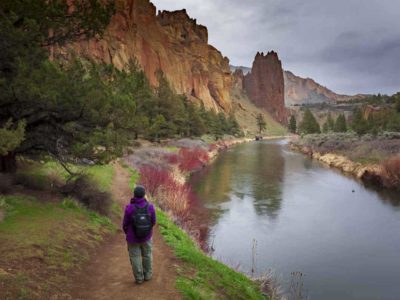

I learned so much from this article. Took note for my sister as she works outside. Plus I am personally a person who’s always cold. One thing that was missing was info about keeping your hands warm. Do you have any advice for layering gloves (if that’s a thing), or the best material to look for when buying gloves in different types of weather & with activity levels?
Thank you!
Thank you for this post. Relocating from Florida to Maine and I can’t wait but a little hesitant about how to handle the cold. This article is very helpful for planning our new winter wardrobe. Thanks again for your thoroughness.
I always get cold when I am in really cold places but I am never intentional about layering up. Thank you for these tips!! I might try to purchase some of the base layers you all recommended!!
As somebody that can name on one hand the occasions I’ve encountered day off as of late moved to a spot that really has winter climate, this article is a lifeline! I’m considerably less terrified of chilly climate in the wake of perusing your article and figuring out how layers should function, haha. Much obliged to you such a huge amount for composing this!!
Knowing how to layer in winter has totally changed the game for me. I love winter hiking and layering properly has allowed me to do that. I used to hate winter, but I don’t mind it now that I’m not freezing all the time haha
As someone that can name on one hand the times I’ve experienced snow but recently moved to a place that actually has winter weather, this article is a lifesaver! I’m much less scared of cold weather after reading your article and learning how layers are supposed to work, haha. Thank you so much for writing this!!
Very nice Post, its really important information while travelling on winter season.
Thank you Deb and Dave for sharing such a nice post 🙂
I`m waiting for more…
Amazing trip!!! I feel my winter vacation would be very nice>
Thank you Dave!!
thank you theplanetd for giving me wonderful information
Amazing! thanks for sharing with us.
These tips will really helpful for everyone to enjoy the winter vacations. Our family planning a trip and this article would be really helpful. Thanks a lot for sharing.
Yep! ‘Love the post.
My feet are very important ‘cos even though I love the cold, that’s where I feel it most!
I usually wear two pairs of trekking socks and hiking boots, as well as a scarf that I can wrap around and in the corners of my neck, and it does the job!
Depending on what I’m doing, I might or might not, wear a hat! 😀
Truly inspiring, and the strength both mentally and physically you demonstrated is truly remarkable!
Thank you so much for sharing such Valuable information.
Beautiful Daves, that was some cool tips
Love this – super informative and the photos are fun! We’re from Minnesota, so we know COLD! And you’re spot on with the types of layers!
I started using wool for cold winters and end up using it all year long – the best material for base layers out there:)
Amazing tips! thanks for sharing.
Great advice guys! With this knowledge, I feel my winter vacation would be very nice and I’m planning to take up a visit in Antarctica.
Great tips. We also do layering here even in the tropics when we climb mountains. You see, the mountains become really cold (sometimes reaching 0 to 10 degrees Celsius) at their summits or shoulders.
I also recommend items by Woolpower – a Swedish brand that supplies to the Swedish armed forces. Their merino blend has a smooth outer and terry inner. I wear their 200gsm leggings and zip-neck top in winter, plus Rohan Troggings and a 400gsm Woolpower gilet (I live in a medieval house, parts of which are not heated in winter). They also make 600gsm jackets and great headgear, including a beanie with earflaps. Other makes I love are Janus (especially the pure merino hoodies, about 275gsm), Devold and Ulvang – all Scandinavian. My socks are mohair, from British company Corrymoor – the Explorer is great, a thick mohair with a terry loop inner: until I found these socks, I always had cold feet in winter.
Nice Post, its really important information while travelling on winter season.
Thank you Dave and Deb for sharing such a nice post.
Thank you for your post and by sharing valuable information.
It’s hard to know what to wear during these times. It is because many of us are unfamiliar with hat to wear especially if you live in hotter territory.
yes, if you are from a warmer climate, dressing for the cold can be tricky. I hope this guide helps those struggling with layering for treks and expeditions or just plain cold weather travel.
Great post, These are all very important things that one must keep it in mind while travelling on winter season. Thank you for your post and by sharing valuable information.
Thanks Kumar. It is important information for sure. I think many people don’t know how to dress for the cold, so we’re glad we could help!
Great advice guys! With this knowledge, I feel I can go to Anctartica!
I’ve had cold feet my whole life. No matter is it cold or warm. No amount of socks, small bags, sneakers or boots made me warm ever. (Except when moving, running)
What could you guys tell about this? 🙂
Super stoked you guys switched it up for Icebreaker. It’s the best not having to shower or change clothes 😛
I tell you! The non-odour factor is huge.
The clothes you wear during your travel plays an important role on your safety and protection. You must always keep in mind of your comfort when traveling.
Well said. We never used to think of it, but clothes are an important part of comfort and safety.
Even though I am from Poland, where we do get very cold winters I can never stay warm enough. Layering is very important, but I feel like I sometimes am too lazy to undress and end up sweating a lot underneath the layers I am wearing. It can also get tricky when it starts raining, but it is still relatively warm.
Merino Wool is awesome. I just wish it was a bit less expensive. I have trekking socks from icebreaker and it is true. Even after a day of difficult trekking my feet don’t smell!
Good point Marta and it’s such a common mistake. We’ve done the same in the past, leaving the heavy layers on for too long will cause you to sweat and then you’ll be freezing in no time.
We took our first “cold weather” trip to Iceland last year and had no idea what we should wear to keep warm. Being from Seattle, we have no need for cold weather gear, so it was an experience. Your post is a perfect guide. I wish we’d had it then!
Thanks Laura, hopefully this will help you for the next cold weather vacation. Since you’ve done Iceland, maybe you can do Greenland next?